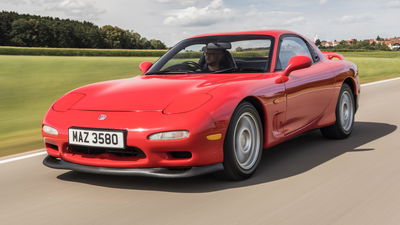Rally Pace Notes Explained: How To Understand Your In-Game Co-Driver

If you’ve ever partaken in some virtual rallying for any amount of time, you’re going to have heard pace notes.
Such is the length and variety of rally stages, having a co-driver feeding you instructions on where to go and how to approach corners is absolutely vital for making them through cleanly and quickly.
Without experience, though, the humble rally pace note can be like hearing a foreign language. Well, we’re here to break down exactly what your virtual co-driver is telling you.
What do the numbers in pace notes mean?

We’ve been there. You’re blasting along in your Subaru Impreza WRC for the first time suddenly your co-driver hits you with the ‘3 right long’. Oh god, you panic, what do you do?
Well, let’s break that one down. The first thing your co-driver will hit you with before approaching a corner is a number which indicates how sharp (or not) a corner is. These are normally indicated ‘1’ through to 6’. The lower the number, the tighter the corner.
As a general guide, 1 is as sharp as a numbered corner will get. Get ready to hit the brakes, hard. A 2 is slightly more open but generally still pretty tight, so you’ll want to slow down heavily for these.
1 - As sharp as a numbered corner will get. Get ready to hit the brakes, hard.
2 - Slightly more open but generally still pretty tight and low speed, so you’ll want to slow down heavily for these.
3 - A medium-speed corner but can still be quite tight, so approach with caution.
4 - More open than a three, but will require some braking still if you’re approaching at speed.
5 - Tends to be quite a gradual bend. Lifting a bit or a dab of braking will usually see you through these fine.
6 - Very open bends. Flat if you dare, lift a little if you don’t.
From there, you’re normally told ‘left’ or ‘right’. Considering you’ve been able to read this, we’ll assume you’re educated enough to figure that one out on your own.
My co-driver is telling me the corner is ‘slight’ and ‘long’, what gives?

Occasionally you might be fed the instruction ‘slight right’ or ‘slight left’, which indicates a very gradual bend which you can keep the throttle pinned for.
Sometimes like in our earlier example, but not always, your co-driver may add ‘short’, ‘medium long’ or ‘long’ to corners. This is an indication of the length of them, which you need to factor in when setting your line and speed.
Now we’re approaching a ‘square’, what should I do?

Sometimes, you’ll get corners that are even tighter than a ‘1’. In the case of a corner that’s pretty much a 90-degree angle, your co-driver will issue you a ‘square right’ or ‘square left’.
If it’s even tighter than that, you’ll get ‘hairpin left’ or ‘hairpin right’. It’s corners like these where you can get on the handbrake like a real hero – or fling yourself off the side of a cliff quite embarrassingly.
What about the bigger numbers? I’m hearing ‘100’
Often on a stage, your co-driver will shout out bigger numbers, usually in intervals of 10, ahead of a corner instruction. This is your distance to the corner in metres which is particularly important if you’re coming up to a tight one that’ll require heavy braking.
Sorry, America, nobody is converting it into feet for you.
To cut, or not to cut?
These are where heroes or zeroes are made. If the inside of a corner is clear enough to cut a bit of it, your co-driver will give you the nod to do so.
Sometimes, that’ll be a ‘small cut’ which indicates you can nip a bit of the corner off but you should do so with a bit of caution.
Oh, and if they tell you ‘don’t cut’, then don’t cut. Seriously. Otherwise, you’re likely into a rock, on your roof or tumbling down the side of a hill.
Anything else I need to know?

That’s pretty much the basics all covered, but your co-driver will throw a few extra things at you from time to time.
Easy ones to understand are the jumps, usually ‘small jump’, ‘jump’ or ‘big jump’. In all cases, prepare for take-off and pay extra attention to any corner instructions fed to you. Similarly, you may hear ‘crest’ which means you’re heading over a gradual incline but not enough to get your car airborne.
Sometimes, they’ll preface this with ‘left-’ ‘right-’ or ‘middle over- which indicates where you should place your car. Often this is to ready yourself for a corner soon following that.
‘Cautions’ are something you’ll get at some stages too. These can range from obstacles like bridges, water splashes, bumps in the road or on some stages even piles of logs.
Are rally game pace notes realistic?

At a basic level, the pace notes you’ll hear in a rally game are similar to those used in real life. In fact, the co-drivers in games are very often famous real-life names recording real-time notes, take Phil Mills in Dirt Rally 2 for example.
They’re often a little more complex in real life though, depending on a driver’s preferences. Ultimately, it’ll come down to what works best between them and their co-driver.
Should you take up real-life rallying, feel free to use what you’ve learned from games as a base to start with. And seriously, don’t cut.















Comments
No comments found.